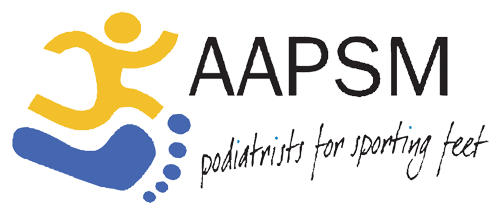Plantar Fasciitis
If you are experiencing foot and heel pain, there is a good chance you might have plantar fasciitis.
But don't worry. This is one of the most common causes of heel pain our podiatrists treat at GC Foot Centres, and we have a range of techniques, technologies, and treatment options available that will relieve your heel pain and reduce the likelihood of issues arising again.
What is Plantar Fasciitis?
At the bottom of our feet is a thick band of connective tissue called the plantar fascia. Starting at our heel, it extends in the shape of a fan to our toes.
This tissue plays a very important role in facilitating pain-free and healthy foot movement and supports our feet during all activities, including work, sports training, and exercise.
However, when the plantar fascia is put under extra strain, it can become overloaded and succumb to injury. This manifests as pain and inflammation and is your body's way of informing you of an issue.
The condition of having a sore or injured plantar fascia is known as plantar fasciitis. It can result in chronic heel pain if the plantar fascia has to deal with a workload it can't manage constantly.
Causes of Plantar Fasciitis
Typically, the most common risk factors and reasons why you might develop plantar fasciitis relate to how you load your foot and the degree to which you place increasing strain on it.
If the strain or load on it is consistently high, the heel bone, structures, and soft tissues that connect it will become overworked and tired. This, in turn, will affect their ability to tolerate shock forces, which subsequently results in injury and inflammation, i.e., plantar fasciitis.
Generally speaking, you are at more risk of developing this condition under the following circumstances:
Age. (Sadly, the older you are, the less elasticity your tissues have).
Consistently wearing slip-ons or thongs, particularly having previously worn comfortable and supportive shoes.
Rapid weight gain and generally living a sedentary lifestyle - which increases the pressure on your tissues and feet.
Having a difference in the length of your leg
Hobbies or jobs that require you to stand on your feet for a long time.
Lack of flexibility, mobility, and strength in the legs and feet.
Muscle dysfunction and imbalances
Overuse of heels, particularly through overtraining.
Running or walking patterns that place increased stress on ligaments and the heel bone.
Walking barefoot on hard surfaces for a prolonged period.
Wearing inadequate or unsupportive shoes when active.
Symptoms of Plantar Fasciitis
The symptoms of plantar fasciitis tend to be localised to the heels, although they can often radiate into the arch as well.
Over time, they can be very debilitating, which is why we recommend making an appointment with us immediately if you are experiencing any of the following:
There is intense discomfort and stabbing pain when you take your first steps after waking up or resting your feet for a while.
Tenderness, swelling, or pain around the heel bone.
Intermittent, sharp, or dull pain that makes your heel feel bruised.
Tightness or stiffness in your heel, calf muscle arch or bottom of your foot.
Pain worsens when starting an activity such as jogging, jumping, or hopping, but it improves once you have warmed up.
Pain at the end of the day.
Being barefoot makes your feet hurt more.
Diagnosing the condition
As the pain from plantar fasciitis varies, it is vital to seek a correct and accurate diagnosis from an experienced podiatrist who is familiar with the condition.
To get plantar fasciitis diagnosed properly, it is necessary to run a complete physical examination of the affected foot. This will include assessing your heel bone, Achilles tendon, and sometimes even the calf muscles. Additionally, your footwear muscle strength, joint flexibility, foot posture, and any imbalances will be evaluated.
Occasionally, you might also be required to have ultrasound imaging on your foot to assess the extent of an injury or confirm a diagnosis. However, this tends only to happen if your pain is excruciating or we suspect you have multiple injuries, including a major plantar fascia tear.
Treatment Options for Plantar Fasciitis
Plantar heel pain is a common affliction that we regularly treat at our Gold Coast podiatry clinics on the Gold Coast.
Once we diagnose plantar fasciitis, we immediately focus on reducing the discomfort of anyone experiencing pain. This is achieved through a individual treatment plan that also prevents heel pain from returning in the future.
Some of the solutions we might draw upon include:
Ankle and foot strapping
Anti-inflammatory medication
Dry needling
Foot mobilisation strategies
Modifying your training programme
Appropriate footwear advice
During your consultation, your podiatrist will go through the pros and cons of each method with you to give you a full understanding of what the rehabilitation process for conditions like chronic plantar fasciitis will entail.
Treatment for Plantar Fasciitis at Home
It is important to get plantar fasciitis treated properly by an expert podiatrist. However, there are some things you can do at home to reduce the symptoms of a painful foot.
Here are some tactics you should employ:
Before putting your entire body weight on your foot when getting out of bed, warm up stiff joints by writing out the alphabet with your feet.
Mix up your daily exercise and activity levels so that, one day, you can do intense activities and, the next, lower-impact ones like swimming or cycling.
Don't wear thongs or go barefoot, as this will only make your plantar fascia work harder.
If you are diagnosed with plantar fasciitis pain, always wear a good quality pair of supported shoes both outdoors and at home.
Apply ice to painful or swollen heels for a period of 15 minutes by rolling your foot on a frozen water bottle..
Take over the counter non-steroidal anti-inflammatory medication as directed by the guidelines on the packaging.
Exercises and Stretches for Relief
There are a couple of exercises you can try to treat heel pain at home. They include rolling your foot over a frozen water bottle, calf stretches using a bench or wall to lean on, stretching your Plantar Fascia by gently pulling your big toe up and massaging your calf and Plantar Fascia by rolling on a tennis ball.
What Happens If I Ignore Plantar Fasciitis?
Unfortunately, Plantar fasciitis is not a condition you can ignore in the hope that you'll eventually feel better. In fact, the longer you leave it, the longer your recovery period is likely to be.
Moreover, if you don't make any changes to your lifestyle or routine, you will find the injury and pain will get worse, to the point that you might have to wear a moon boot on account of intense pain in your plantar fascia.
How to Prevent Plantar Fasciitis
As with anything, prevention is always better than the cure. So, the risk of suffering from Plantar fasciitis commonly can be reduced by implementing a few simple proactive measures.
They include:
Getting proper advice about what footwear you should wear.
Not wearing thongs or walking barefoot.
Regularly conditioning and strengthening your lower leg and foot muscles by completing exercises recommended by a podiatrist.
Do proper calf stretching exercises and other warm-ups and warm-downs before and after undertaking any strenuous or sporting activity.
Slowly increase training intensity and length over time.
When to Seek Medical Attention
Even if you have had your heel pain diagnosed, and especially if you have not, it is important to seek medical attention if you feel any prolonged or intense pain in your foot.
You might make the pain worse at the bottom of your foot or risk further injury by waiting and doing activities that may aggravate it more.
FAQs about Plantar Fasciitis
-
Some of the leading causes of heel pain associated with plantar fasciitis are ill-fitting shoes, obesity, and rapid weight gain, sports injuries, incorrect training techniques and an abnormal walking style.
-
Heel spurs are a type of bone growth that protrudes from the back of your heel bone inside your foot. It can occur when there has been increased stress placed on your foot ligaments.
-
As its name implies, this widespread condition occurs when the arches flatten on the inside of your feet as you put pressure on them.
Interestingly, all babies are born with flat feet, and the arches form during their early childhood.
-
Also known as foot orthoses or orthotics, shoe inserts are specially designed aides that support your feet and help to improve posture. Typically, they are prescribed by a podiatrist for those with chronic leg or foot issues or for professional athletes wanting to correct foot issues to improve their performance.
-
Good ways for reducing heel pain at home include not wearing thongs or walking barefoot, mixing up your exercise routine between high and low-intensity work, applying ice when you feel intense pain, and doing some foot exercises before you get out of bed.






